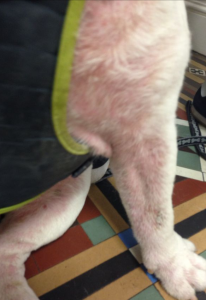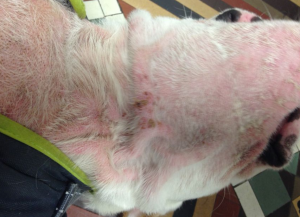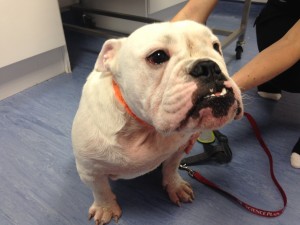Have you seen a demodex mite??
What are demodex?
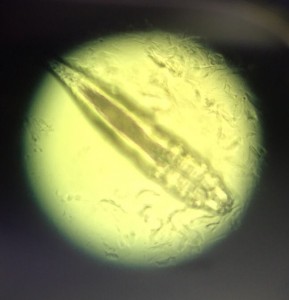 Demodex are mites which live in the hair follicles within your dog or cat’s skin although they are not visible to the naked eye. In small numbers they make up part of their normal skin environment. The mites spend their entire life cycle on your pet and are not considered to be contagious. However, in large numbers these mites can cause problems and can then be referred to as ‘Demodicosis’ or ‘Demodectic mange.’
Demodex are mites which live in the hair follicles within your dog or cat’s skin although they are not visible to the naked eye. In small numbers they make up part of their normal skin environment. The mites spend their entire life cycle on your pet and are not considered to be contagious. However, in large numbers these mites can cause problems and can then be referred to as ‘Demodicosis’ or ‘Demodectic mange.’
How do normal mites suddenly become a problem?
This is not completely understood but links have been found with; type of breed, immune system suppression therefore, young, old or ill animals are at higher risk. In young animals it may also be due to an inherited immune dysfunction
What does demodicosis look like?
The mites can affect a few small areas leading to well defined areas of hair loss, redness and dry flaky skin. These are commonly around the lips, eyes or forelimbs but can occur anywhere. They are not typically itchy. In some cases this can progress to generalized disease affecting your animals whole body. In these cases they have large areas of hair loss, redness and can even develop oily or crusty skin. Secondary bacterial infection can also occur which can then make your animal itchy.
We have recently seen Vinny, a 1 year old mischevious Bull dog for areas of hair loss and redness over his muzzle, face, both forelimbs and chest.
How do prove that demodex are causing the issue?
We take a series of samples from your pet’s skin and look at these samples under a microscope. In large numbers we should be able to see the Demodex mites.
If we find Demodex and your animal is young, like Vinny, then we often proceed straight to treatment. However, in older animals we have to ask ourselves why the Demodex have been able to multiply. In these cases it is best to try to identify any underlying disease or immune suppression, however, in some cases this may not be possible.
How do we treat Demodicosis?
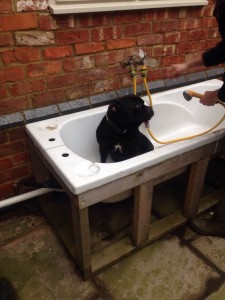 The only licensed treatment in the UK is a liquid your animal must be washed in.
The only licensed treatment in the UK is a liquid your animal must be washed in.
The typical course is four weekly washes but this may need to be continued for longer. If your pet has a particularly thick or long coat then it may need to be clipped to allow adequate contact and penetration of the product.
Any underlying conditions must be addressed where possible.
Vinny was extremely well behaved for his washes and after four his repeat skin tests were negative for Demodex. His skin looks lots better and his hair is already growing back. We will monitor Vinny for recurrence of these signs again and in the mean time we have no doubt he will be up to mischief!

